The Evolution and Essential Role of ECG Machines in Modern Healthcare
 Apr 22,2025
Apr 22,2025

 Uryn
Uryn
Electrocardiogram (ECG) technology has undergone remarkable transformation since its inception, evolving from bulky laboratory equipment to sophisticated digital systems that fit in the palm of your hand. This journey reflects not just technological progress but a fundamental shift in how we approach cardiac care - from reactive treatment in hospital settings to proactive monitoring in everyday life.
At its core, every ECG machine performs the same vital function: capturing the heart's electrical activity through electrodes placed on the skin and translating these faint signals into the characteristic waveform pattern that clinicians have relied on for over a century. The familiar peaks and valleys of the P wave, QRS complex, and T wave tell a detailed story about the heart's rhythm, rate, and overall electrical health. What's changed dramatically is how we capture, interpret, and utilize this information.
Modern healthcare facilities typically employ advanced 12-lead systems that provide comprehensive views of the heart's electrical activity from multiple angles. These workhorses of cardiology departments combine precision diagnostics with seamless integration into electronic health records. Meanwhile, the rise of portable ECG technology has brought cardiac monitoring out of the clinic and into patients' daily lives. Compact handheld devices, wearable monitors, and even smartwatch-based ECGs now enable continuous tracking of heart rhythms in real-world settings.
The applications of ECG technology are as diverse as the machines themselves. In emergency medicine, rapid ECG interpretation can mean the difference between life and death when diagnosing acute coronary syndromes. Cardiologists rely on stress ECG systems to evaluate how the heart performs under physical exertion, while intensive care units use continuous monitoring to watch for dangerous arrhythmias in critically ill patients. Beyond traditional medical settings, ECG technology now supports veterinary cardiology, sports medicine, and even space exploration programs monitoring astronauts' cardiovascular health.

Perhaps most significantly, ECG machines have become key enablers of the patient empowerment movement in healthcare. Individuals with chronic cardiac conditions can now track their heart health between doctor visits using personal ECG devices that sync with smartphone apps. Fitness enthusiasts monitor their heart's response to exercise, while aging populations use wearable ECGs to screen for asymptomatic arrhythmias. This democratization of cardiac monitoring represents a fundamental shift toward preventive care and early intervention.
Innovations Shaping the Future of ECG Technology
As we look toward the future, ECG technology stands at the intersection of several groundbreaking innovations that promise to redefine cardiac care. Artificial intelligence is perhaps the most transformative of these developments, with machine learning algorithms now capable of detecting subtle patterns in ECG data that might escape human notice. These AI systems, trained on vast databases of cardiac rhythms, can identify arrhythmias with remarkable accuracy and are beginning to predict cardiac events before they occur.
The wearable revolution has taken ECG monitoring out of the clinic and into daily life. Today's FDA-cleared smartwatch ECGs represent just the beginning of this trend. Researchers are developing next-generation wearable sensors that adhere to the skin like temporary tattoos, capture data through clothing, or even monitor cardiac activity at a distance using advanced radar technology. These innovations aim to make continuous cardiac monitoring so unobtrusive that users forget they're wearing medical-grade sensors.
Cloud computing has emerged as another game-changer for ECG technology. Modern systems can now transmit real-time ECG data to secure cloud platforms, where algorithms analyze the information and flag abnormalities. This enables remote monitoring programs where cardiologists can oversee hundreds of patients simultaneously, receiving alerts only when intervention is needed. For rural patients or those with mobility challenges, this technology eliminates geographical barriers to specialist care.
Perhaps the most exciting frontier in ECG technology involves moving beyond traditional waveform analysis. Researchers are exploring how subtle variations in ECG patterns might reveal information about blood chemistry, respiratory function, or even neurological conditions. Some studies suggest that advanced ECG analysis could one day help detect conditions like diabetes or sleep apnea. Other innovations focus on material science, with graphene-based electrodes and flexible electronic skins promising more comfortable, higher-quality signal acquisition.
The ultimate goal of these advancements is to create an ecosystem where cardiac monitoring is continuous, unobtrusive, and predictive rather than intermittent and reactive. Imagine a world where your car seat detects early signs of cardiac strain during your commute, your bathroom mirror screens for arrhythmias while you brush your teeth, and your smartwatch alerts you to seek care before symptoms even appear. This is the future that emerging ECG technologies are working to create - one where heart health is monitored as routinely as we check the weather, with potentially life-saving results.
As these technologies mature, they'll need to balance innovation with accessibility, ensuring that advanced cardiac monitoring benefits all populations, not just the tech-savvy or well-insured. They'll also need to address important questions about data privacy, algorithm transparency, and the appropriate role of technology in the patient-provider relationship. What remains certain is that ECG technology will continue to be at the heart of cardiac care - both literally and figuratively - for decades to come.

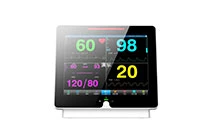

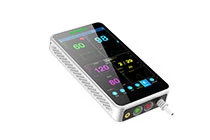
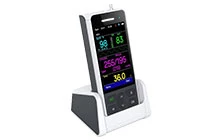
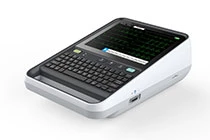
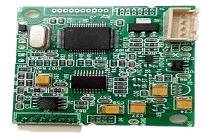




 Home
Home Handheld Telemetry Patient Monitor Factory: Leading Innovation in Cardiac Care
Handheld Telemetry Patient Monitor Factory: Leading Innovation in Cardiac Care  You May Also Like
You May Also Like

 Tel
Tel
 Email
Email
 Address
Address












